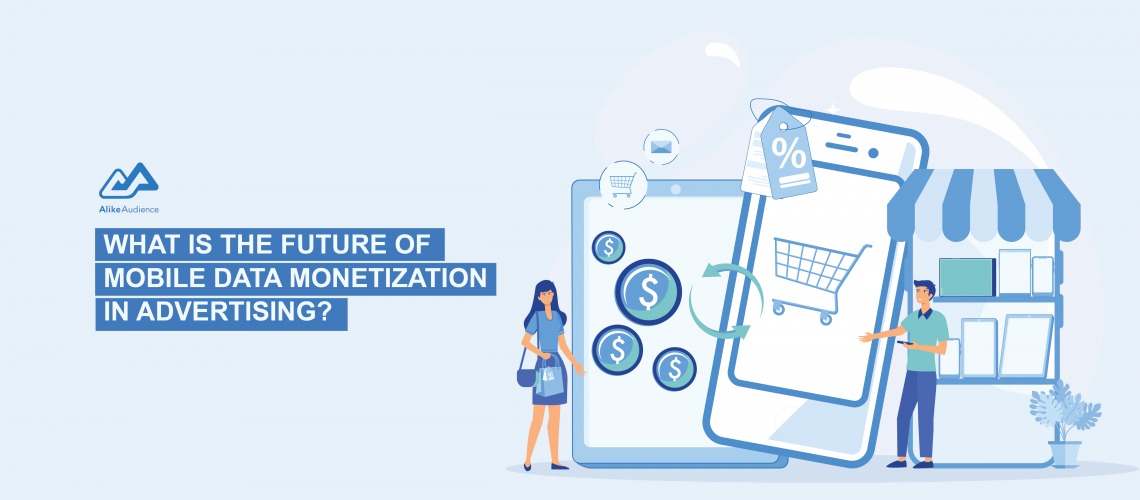How many smartphones are there in the world? Nearly 6.6 billion, says research firm Statista, and on track to exceed 7.8 billion by 2028, led by India and the United States. In contrast, there are about 1.7 billion televisions in households worldwide.
Every year is the year of mobile, without a doubt. But how do you monetize your ad inventory if you are a publisher or media owner in the new age of consumer privacy protection? And what options should advertisers consider?
The simple answer is to place advertising against excellent content. That is followed by mobile channel selection, the effective application of audience data in buy-side digital advertising platforms, optimisation, and of course reporting on the success of your mobile advertising campaign.
However, the quality of that customer intelligence web data will dictate how successful the campaign is in reaching new customers. The best and most accurate first party data an organization can create, and then activate in mobile programmatic platforms, will enable that brand to more accurately reach its target audiences. Mobile marketing platform VServ believes that companies are only at the cusp of getting the most from their own data.
The Era of Mobile Marketing is Here

“The next phase will see marketers adopt newer practices, as they increasingly adopt digital for advertising. Now, brands can also collect first party data purely because someone is also visiting their web store or e-commerce ventures. It constitutes a lot of expansion of intelligence for brands, which was previously only available to publisher platforms.”
In this new world of mobile marketing, the data that brands, and media owners, have inside their own web data repositories, will become invaluable.
“What’s largely going to happen in the marketing world, is that there will be a rise of first party and second party data, where a lot of exchange of first party data will happen between different entities in the market,” VServ said.
For many companies, this will involve undertaking a spring clean of their mobile data monetization and collection strategies. Data and analytics consulting firm Analytics8 said companies need to have a plan in place to ensure that their data and the insights derived from it are usable to the end consumer.
“To take advantage of data monetization internally, start by reviewing your data strategy—because anytime you take a holistic look at the role data plays in your company, you will uncover areas for improvement and optimization. Next, look at the capabilities of your data stack —are you taking advantage of everything your technology has to offer, or do you need to consider new technology and infrastructure to get more from your data?,” Analytics8 said in a recent post.
Related: The Guide to Customer Data in Programmatic Advertising: Types, Uses, and Challenges
Advertisers and Publishers Can Win In Mobile
This idea applies to all kinds of mobile data generated by an organization and is vital in mobile advertising, which has exploded across a multitude of channels in the past decade, and gathered pace since 2016.
The key to mobile data monetization in advertising is to use available data to deliver ads that are relevant and valuable to users. By doing so, advertisers can increase engagement and conversions, while app developers and publishers can generate revenue from advertising.

There are several ways for mobile data monetization in advertising. Here are the key channel options:
1. In-app advertising
Advertisers run paid ads across the vast universe of mobile apps,, and app publishers and developers receive a share of the revenue generated. Some analysts believe mobile apps have trumped the mobile web world, but there remains significant change ahead.
2. Location-based advertising
Mobile data is deployed to assess the location of opted-in consumers. Advertisers can procure data that shows where consumers are most likely to spend in retail environments, and advertisers can use this information to display ads that are relevant to users’ current location. Global privacy regulations may crimp some activity here, leading to a surge in anonymized data targeting.
3. Behavioural targeting
This tactic applies to the target user’s behaviour online. Mobile ads will be served that are in line with the interests of the consumer. For example, if a user frequently searches for sports news, they may be targeted with ads for sports equipment or tickets to sporting events.
4. In-game advertising
This is the next frontier of mobile ad targeting as brands realize there is a massive untapped opportunity to reach people across a wide age demographic, and in multiple ways. Expect to see more innovation with in-game advertising over the next few years.
5. Mobile video advertising
Video is often the most expensive, and highest return channel. Every brand wants to deploy a mobile video advertising strategy. According to IAB Europe’s State of Online Video Advertising in 2022 report, more than 61% of digital video campaigns are run on the mobile web nowadays.
Wrapping Up
These channels provide a plethora of options for brands to run engagement campaigns on the mobile web, or via mobile apps. Some marketers simply want performance marketing style outcomes on the mobile, while others will invest in medium-to-long term branding initiatives.
The volume of mobile data now available to marketers provides them with a more dynamic insight into how and where your customers are engaging with your mobile content (website), and your mobile ad campaigns. In addition, there will be new mobile ad technologies that present new ways for marketers to reach consumers. They include mobile augmented reality (AR) advertising, new in-game mobile ad formats, and QR-based mobile activations. Furthermore, there will be heightened competition between the Android mobile operating system and Apple’s IOS for advertising dollars, as identifiers are phased out.
Monetization strategies will be focused on the right channel, campaign optimisation, and identifying the right target audience.
The mobile device, whether it be the smartphone or the tablet, is in everyone’s hands now. It’s time to ensure that brands and publishers adopt smart practices to ensure they are making the most of their own data.


